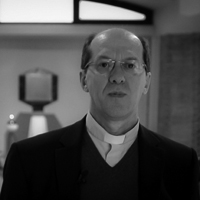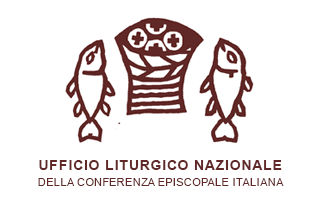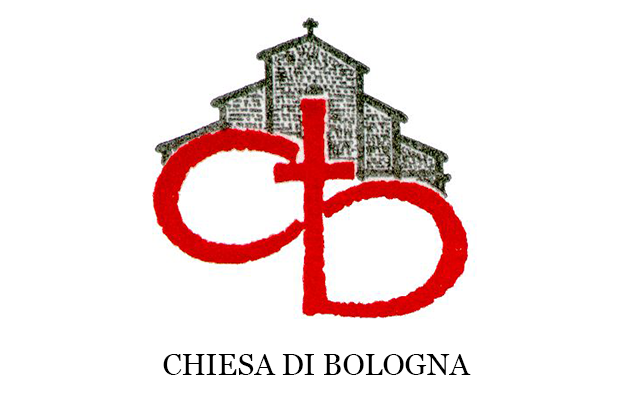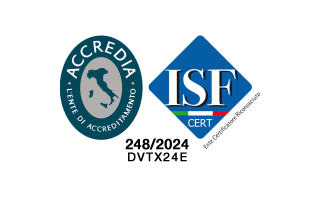DEVOTIO LABScientific Committee
Scientific Committee
RIGHT PEOPLE
Scientific Committee
The cultural program is curated by the Scienfic Committee.
In collaboration with

Coordinator:
Claudia Manenti, architect, head of Dies Domini - Centro Studi per l'architettura sacra e la città, Fondazione Card. Giacomo Lercaro, Bologna
- Emanuele Cavallini, architect
- Don Stefano Culiersi, director of the Liturgical Office - Diocese of Bologna
- p. Andrea Dall'Asta SJ, director of Galleria San Fedele, Milan
- Barbara Fiorini, architect
- Giovanni Gardini, president of Italian Ecclesiastical Museums Association, director of Raccolta Lercaro-Bologna, vice director Faenza-Modigliana Diocesan Museum, professor of iconography and Christian archaeology
- Don Paolo Tomatis, director of the Liturgical Office - Diocese of Torino, member of National LIturgical Office Consultancy - CEI, professor of liturgy
- Don Amilcare Zuffi liturgist and priest, rector of Metropolitan Cathedral of Saint Peter - Diocese of Bologna
MORE INFO: cultura@devotio.it
MORE INFO IN ITALIAN LANGUAGE

CLAUDIA MANENTI
Claudia Manenti is an architect who graduated first in Florence and then at the Bologna University at the Architecture and Spatial Planning Department. It is here that Claudia Manenti achieved her PhD, which was about Places of identity and spaces of the holy in the contemporary European city. During her career, she was professor at the Architecture faculty of Ferrara and Cesena. Since 2008 she has been director of Dies Domini Centro Studi per l'architettura sacra and of la città of Fondazione Lercaro of Bologna. According to that, she organizes many conferences and meetings about the liturgical architecture. She is also member of the holy art Commission of both Bologna and Ravenna Dioceses.Since 2008 she has been professor of Introduction to the liturgical architecture at the Bologna Pontifical Regional Seminary.
In addition to that, she published several articles and essays, such as Architecture of temporary churches, BUP, Bologna, 2016; Places of identity and spaces of the holy in the contemporary European city, edited by Franco Angeli, Milan 2012; Cardinal Lercaro and the contemporary city (edited by) Editrice Compositori, Bologna, 2010; and Church and city fifty years after the Second Vatican Council (edited by) BUP, Bologna 2016.
In the meanwhile, she edits the publication series of Dies Domini Centro Studi per l'architettura sacra e la città of Fondazione Card.Giacomo Lercaro of the Bononia University Press – Bologna. Moreover, during her career she has also worked on several architectural projects and liturgical arrangements.

EMANUELE CAVALLINI
Emanuele Cavallini is an architect, who gained a PhD in Design and Engineering of the Subsoil and of the Built Environment at the INGEO Department, “G. D’Annunzio” University – Chieti, Pescara. Moreover, he has a master in "Architecture, holy arts and liturgy” at the European University of Rome. After his master, he attended the postgraduate course “Design of the Holy Space” at the “G. D’Annunzio” University – Pescara.Nowadays, he is a member of the Board of the Study Centre “Architecture and Liturgy” in Pescara and it is always here that Emanuele is taking part of the editorial Board of THEMA - a specialist semi-annual journal about cultural heritage - and of its online platform www.thema.es. He also takes care about all the cultural and formative activities of that Centre.
During his lifetime, Emanuele attended scientific committees of the national conference “Spaces of Communion. Architecture and art for the liturgy in the fiftieth anniversary of the Second Vatican Council” - held on 5 December 2015 in Montesilvano (PE) – and the conference "Architectures and places of Mercy" – held on 28 October 2015 in Montesilvano (PE).
On February 2016 he was selected among 20 under 35 participants at the CLI LAB, which was held at the Bose monastery.

DON STEFANO CULIERSI
Don Stefano Culiersi is the director of the Liturgical Office of the Diocese of Bologna. During his studies, he first obtained the Theology Licence, with a specialization in History of Theology at the Faculty of Emilia Romagna. Then he gained the pastoral liturgical specialisation at the Institute of Santa Giustina of Padova.It has been several years, since he has taught liturgy at the School of Diocesan Theological Formation.

P. ANDREA DALL'ASTA SJ
After studying architecture, P. Andrea Dall’Asta (born in 1960 in Fontevivo, Parma) attended the Jesus Company in 1988. He graduated in Philosophy in Padua and, after getting a graduation in Theology and a year of studies at the Columbia University of New York, he obtained a PhD in Aesthetic Philosophy in Paris. Since 2002, he has been director of San Fedele Gallery and in 2014 he founded the San Fedele Museum, in Milan - Routes of art and faith. Besides, from 2008 to 2019 he was also director of the Lercaro collection, in Bologna.His particular attention is focused on themes like art, liturgy and architecture, but at the same time, he focused on the analysis of the image as an important tool for shaping the artistic world of young people and the dialogue between art and faith. He is professor at the Pontificia Facoltà Teologica in Naples. He writes on Civiltà Cattolica and on different newspapers, such as Avvenire. Moreover, he took part in some important projects such as the liturgical adaptation of the Reggio Emilia Cathedral, of the Gallarate Mary of the Assumption Basilica and the realisation of the Ambrosian Gospel Book. P. Andrea Dall’Asta was also part of the scientific Committee of the Vatican Pavilion for the Biennale of Venice (2013) and he was also co-curator of the section Drawing the Holy, at the Biennale di Architettura of Venice (2014).
During his lifetime, he wrote several texts, such as Dove abita Dio. Le dimore del divino tra Atene, Roma e Gerusalemme, Àncora, Milano 2022; La Croce e il Volto. Percorsi tra arte, cinema e teologia (edizione rivista e ampliata), Àncora, Milano 2022; La luce colore del desiderio. Percorsi tra arte e architettura, cinema e teologia dall’Impressionismo a oggi, Àncora, Milano 2021; La mano dell’angelo. La Vergine delle Rocce di Leonardo. Il segreto svelato, Àncora, Milano 2019; Il viaggio della vita. La chiesa di San Fedele in Milano tra arte, architettura e teologia: paradigma di un percorso simbolico, Àncora, Milano 2019; Dio chiama con arte. Itinerari vocazionali, Àncora, Milano 2018; La luce, splendore del Vero, Percorsi tra arte, architettura e teologia dall’età paleocristiana al barocco, Àncora, Milano 2018; Eclissi. Oltre il divorzio tra arte e Chiesa, San Paolo edizioni, Cinisello Balsamo (MI) 2016; La rivelazione dell’Apocalisse. Il destino dell'uomo nell’arte tra passato e presente, a cura di Dall’Asta Andrea e di Giovanni Morale, Silvana editoriale, Milano 2015; Dio storia dell’uomo. Dalla Parola all’immagine, Messaggero edizioni, Padova, 2013; Nascere, il Natale nell’arte, San Paolo edizioni, Cinisello Balsamo (MI) 2012.

BARBARA FIORINI
Barbara Fiorini was born in Massa and graduated at the Architecture Faculty at La Sapienza in Rome. During her life, she attended several master courses related to the mediaeval archaeology and the holy architecture. She is both an architect, specialised in restoration, and a freelancer in restoration and enhancement of Cultural Heritage, in particular in the ecclesiastical field.Barbara has always been interested in the religious architecture of the 20th Century and that is why she has always taken part in research activities related to competitions for new churches. She is author of several publications about restauration and urban archaeology cases and cultural researches.
She has been relator of both national and international conferences about holy architecture.

GIOVANNI GARDINI
Giovanni Gardini obtained a Baccalaureate in Theology and a Licence in Theology of Evangelisation at the Academic Theological Study of Bologna. At the same time, he is associated professor at the Theological Faculty of San Tommaso d’Aquino in Rome. After getting his diploma at the Accademia di Belle Arti in Ravenna, he obtained both a Baccalaureate and a Licence in Christian archaeology at the Pontificio Istituto of Christian Architecture, in Rome. Giovanni’s master degree was about History, protection and conservation of pieces of art and he graduated at the Cultural Heritage Faculty at the Bologna University, in Ravenna. He has always been engaged in the research and dissemination of the artistic heritage, with a special focus on the Christian iconographic tradition. Moreover, he played the role of curator in different exhibitions and conferences. He has also written several articles and essays, but in this right moment, Giovanni teaches at the Higher Institutes of Religious Sciences in Forlì, Rimini, Florence and Arezzo. Besides, he is also deputy-director at the Diocesan Museum and deputy librarian at the Card. Cicognani Library – Diocese of Faenza-Modigliana. He is also a publicist journalist and tour leader of Emilia-Romagna.
DON PAOLO TOMATIS
Don Paolo Tomatis was born in Torino in 18/12/1968 and he has been presbyter of the Diocese of that same town since 1993. With a thesis on the relationship between aesthetics and liturgy, he obtained his Licence and Doctorate in Holy Liturgy at the Pontifico Ateneo of Sant'Anselmo in Rome. The thesis was: Accende lumen sensibus. Liturgy and body senses, Edizioni Liturgiche Vincenziane, Roma 2010.In this right moment, he teaches Liturgy and Fundamental Sacramentary at the Theological Faculty of Northern Italy - Torino section - at the Higher Institute of Religious Sciences. Since 2012, he has been a guest lecturer at Licence courses of the Institute of Pastoral Liturgy of St Justina in Padua, at the course: "The spiritual experience of the liturgy". Since 2013, he has been teaching Liturgy and Spirituality at the Spirituality Study Centre of the Theological Faculty of Milan. Since 2016, in that same Faculty, he has been teaching Liturgy courses at the bachelor's degree and at the second cycle for the licence.
Since 2005, he has directed the Diocesan Liturgical Office and coordinated the Regional Liturgical Commission for Piedmont and the Aosta Valley. Moreover, Don Paolo Tomatis has been a member of the editorial staff of Rivista Liturgica, since 2006. In addition to that, since 2007 he has also been member of the Consulta of the National Liturgical Office of the CEI. It has been three years that he has played the role of the APL president - Association of Professors and Practitioners of Liturgy.

DON AMILCARE ZUFFI
Don Amilcare Zuffi is a liturgist and parish of the Diocese of Bologna.He has been the former director of the diocesan liturgical Office and secretary of the Liturgical Commission of Emilia Romagna and member of the Consultation of the National Liturgical Office for liturgical matters.
He has also played the role of professional consultant for those who have submitted projects for the construction of new churches.
























